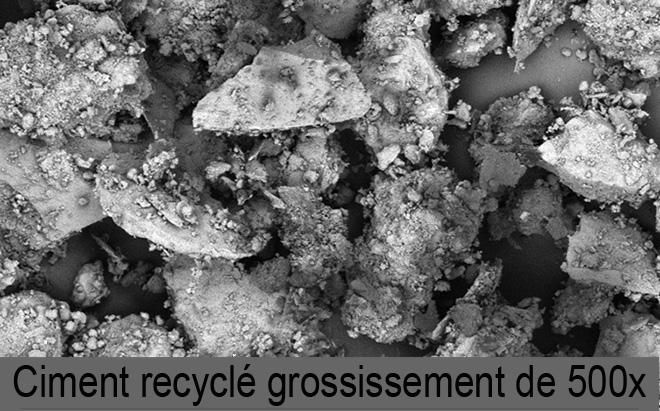
By reusing and recycling, we can avoid the overuse of natural resources when manufacturing new products. It also means that a second life can be given to construction materials, considered then as new raw material. Meet Nonna Algourdin, Lecturer at ENISE.
There is a high consumption of raw material and a substantial production of waste in the sector of Construction and Public works. But it is also a sector where energy consumption and carbon footprint are increasingly taken into consideration. Currently, in France, there are almost 200 million tonnes of inert waste generated by the Construction and Public works sector each year. Moreover, many reinforced concrete buildings, over 50 years old, will soon reach the end of their lifespan, causing restoration work or demolition, which will increase the volume of concrete to be recycled.
Given the current environmental challenges, one of the main objectives is to offer a solution for recycling construction materials, while limiting additional costs.
"The notion of circular economy (recycling and reuse of construction waste) plays a major role in my research on construction materials, and more specifically with regard to their behaviour when exposed to fire. It is necessary to think about recycling or reusing carbon fibres when using them as a reinforcement material for example. The same is true for waste resulting from the demolition of reinforced concrete buildings. End-of-life recycling has become a priority, which will reduce the inevitable negative impact of demolition on the environment. This will eventually lower the use of non-renewable raw material." Nonna Algourdin, Lecturer in Civil Engineering, explained.

A large part of recycled concrete is used straight away after sorting and being reclassified, in road construction (backfill, sub-layers, foundation layers, base layers). It is also possible to reuse recycled aggregate and sand found in concrete formulations. This technique is now regulated. Another innovative way is to reuse recycled concrete filler, either by replacing part of the raw material (limestone) or by substituting part of the concrete directly.
“The reinforcing fibres (carbon, basalt, glass, etc.), which have a high added value, can be recovered from end-of-life parts or inert waste. Depending on the technology used, recyclates will be used in the form of shredded material in the construction sector or integrated in the form of fillers in non-structural parts, in the automotive sector. Moreover, the mechanical properties of recycled fibre are comparable to those of virgin fibres that can be integrated into new composites.” Nonna Algourdin tells us.
Recycling construction materials is still a niche process and their use marginal. The challenge today is to turn this tendency around and face up to the environmental emergency. The materials mentioned are, in fact, not about to give up their first place, and for good reason, they have many advantages, including their recyclability.

Nonna Algourdin has been teaching at ENISE since 2018, at the Laboratoire de Tribologie et Dynamique des Systèmes (LTDS). Other than her specialisation in recycling and responsible recovery of materials, she has also specialised in the thermomechanical behaviour of construction materials (textile-mortar composite reinforcement (TRC - Textile Reinforced Concrete), fibre-reinforced concrete or recycled concrete). Several large-scale projects are underway, in particular the AC2M2 project on composite reinforcement of the textile / mortar type replacing polymer matrices by mineral matrices, and another project on the development of alternative cementitious materials resistant to high temperatures, supported by the Auvergne-Rhône-Alpes Region, and the project on the engineering of low-carbon cement systems, supported by CNRS through the interdisciplinary programmes of MITI (Mission for Transversal and Interdisciplinary Initiatives) and the CSTB (Scientific and Technical Centre for Building).
